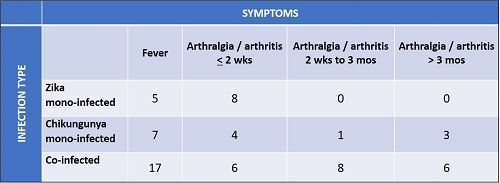Zika Virus and Chikungunya Co-Infection May Result in Prolonged Infection
At the First International Conference on Zika Virus, Marta G. Cavalcanti, MD, PhD, discussed her team’s recent research regarding viral RNA shedding in symptomatic and asymptomatic Zika patients who are either mono-infected with Zika or Chikungunya, or co-infected with both.
When it comes to Zika and those at highest risk of developing complications, the first thing that comes to mind is pregnant women and their developing fetuses. Many studies have shown that congenital infection with the Zika virus results in microcephaly and other neurological complications. However, in a new study presented at the First International Conference on Zika Virus, new findings were revealed on disease severity in those individuals who are dually infected with Zika virus and Chikungunya.
In the conference’s first session, which discussed Zika epidemiology, Marta G. Cavalcanti, MD, PhD, Infectious Disease Clinic, Hospital Celmentino Fraga Filho, Federal University of Rio De Janeiro, Rio De Janeiro, Brazil, presented her team’s findings regarding Zika virus mono-infection, Chikungunya mono-infection, and Zika and Chikungunya co-infection.
Out of the 163 individuals who presented to the facility, the research team studied a cohort of 19 females and 18 males with an average age of 43 years who presented with Zika virus infection. According to the research, 8 individuals had Zika mono-infection, 9 had Chikungunya mono-infection, and 20 were co-infected with Zika and Chikungunya. The researchers followed up with the individuals for up to one year, while testing different biological samples through RNA testing. Accordind to Dr. Calvalcanti, Zika virus RNA testing is the most reliable way to confirm Zika infection. Normally, RNA can be detected in serum or whole blood samples for around one week, and in urine for up to 2 weeks, according to Dr. Cavalcanti.
Although Zika-related complications can be serious in at-risk populations, only 20% of infected individuals typically present with symptoms. Even in those who do present with symptoms, the severity is usually only mild and they last for about one week. Dr. Cavalcanti and her research team found that those who individuals who were co-infected with Zika and Chikungunya presented with a fever or other symptoms more often than those who were mono-infected with either of the two arboviruses (see Table). Approximately 20% of co-infected individuals remained symptomatic for up to 300 days, post onset.
Table: Number of Individuals Who Presented With Symptoms Based on Infection Type

In an exclusive interview with Contagion®, Dr. Cavalcanti explained why prolonged RNA shedding delays diagnosis of Zika co-infection, as well as discussed Zika infection in a patient with lupus.
Dr. Cavalcanti concluded her presentation with some key findings from her team's research:
- Individuals mono-infected with Zika virus may exhibit persistent and prolonged Zika virus RNA shedding in urine and blood;
- Asymptomatic individuals who have lab-confirmed Zika virus mono-infection exhibited prolonged Zika virus RNA shedding;
- In regions known to be endemic for other arboviruses, especially Chikungunya virus, prolonged Zika RNA shedding may be attributed to co-infection;
- There may be a trend between persistent RNA shedding and prolonged duration of symptoms;
- There is a higher morbidity rate associated with Zika and Chikungunya co-infection; and finally
- Co-infection with Zika virus and Chikungunya should be considered to be a risk factor for prolonged RNA shedding.
DISCLOSURES
None
SOURCE
First International Conference on Zika Virus
Exclusive interview with Contagion®
PRESENTATION
Session 1: Zika Epidemiology
Viral RNA Shedding During Asymptomatic and Symptomatic ZIKV Mono-Infection and ZIKV/CHIKV Co-Infection in Brazilian Cases: Implications in Clinical Outcomes
